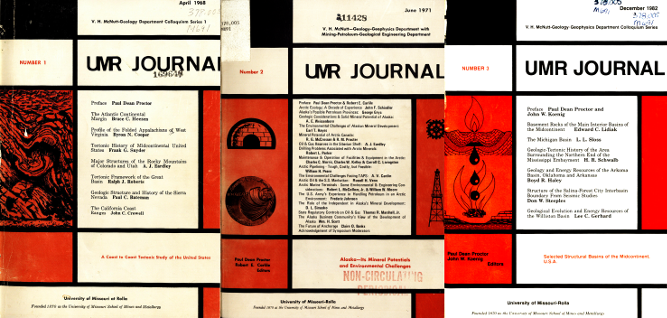UMR Journal -- V. H. McNutt Colloquium Series

Publication Date
01 Dec 1982
Abstract
The basement underlying the deeper basins in the Midcontinent is not well known because of the considerable thickness of overlying sedimentary rocks. However, gravity and magnetic surveys and sparse wells to basement suggest that deeper intracratonic basins are characteristically underlain by denser and more magnetic rocks than in adjacent areas. This correlation has important bearing on understanding the tectonic development and geologic history of Midcontinent basins.
The Michigan basin is underlain by prominent, linear gravity and magnetic highs that extend across the southern peninsula. A recent deep well to basement encountered basalt overlain by red clastic sedimentary rock. The combined geophysical and geological data support the idea that the basin is underlain by a Precambrian rift zone. The Illinois basin also contains prominent gravity and magnetic anomalies. The broad anomalies do not appear to correlate with any specific rock type at or near the top of the basement and may instead reflect intrabasement variation, such as major tectonic boundaries. The more local, closely spaced anomalies outline a complex reactivated rift zone that trends generally northeast through the deepest part of the basin. The Williston basin is another deep basin that is underlain by a linear gravity high. The gravity anomalies continue into Canada where they are associated with granulites and major fault zones that occur near the boundary between the Superior and Churchill provinces. The few wells to basement in the deeper parts of the Williston basin along the gravity high encountered granulites and other high-grade metamorphic rocks, suggesting that a major tectonic boundary similar to that occurring in Canada is present in the basement underlying the basin. The Forest City and Salina basins contain less distinct gravity highs, which occur on opposite sides and are partly obscured by the well known Midcontinent gravity high and rift zone. The remaining basin under discussion, the Arkoma basin, differs from those previously discussed in that it contains a large gravity low, which probably reflects the development of an extremely thick section of sedimentary rocks along the Ouachita structural belt. The Arkoma is, thus, more comparable to the Appalachian basin than to the other basins, which are totally within the craton.
The basins of the Midcontinent have apparently not all had the same tectonic development and are probably more complex than generally envisioned. A generalization which appears to be a useful working hypothesis is that intracratonic basins of the continental interior differ from foreland basins and originated by reactivation of older structures during periods of extensional tectonism. Consideration of basin development should take into account the Precambrian as well as the overlying Phanerozoic rocks.
Document Version
Final Version
File Type
text
Language(s)
English
Rights
© 1982 University of Missouri--Rolla, All rights reserved.
First Page
5
Last Page
24
Recommended Citation
Lidiak, Edward C.
(1982)
"Basement Rocks of the Main Interior Basins of the Midcontinent,"
UMR Journal -- V. H. McNutt Colloquium Series: Vol. 3, Article 3.
Available at:
https://scholarsmine.mst.edu/umr-journal/vol3/iss1/3


